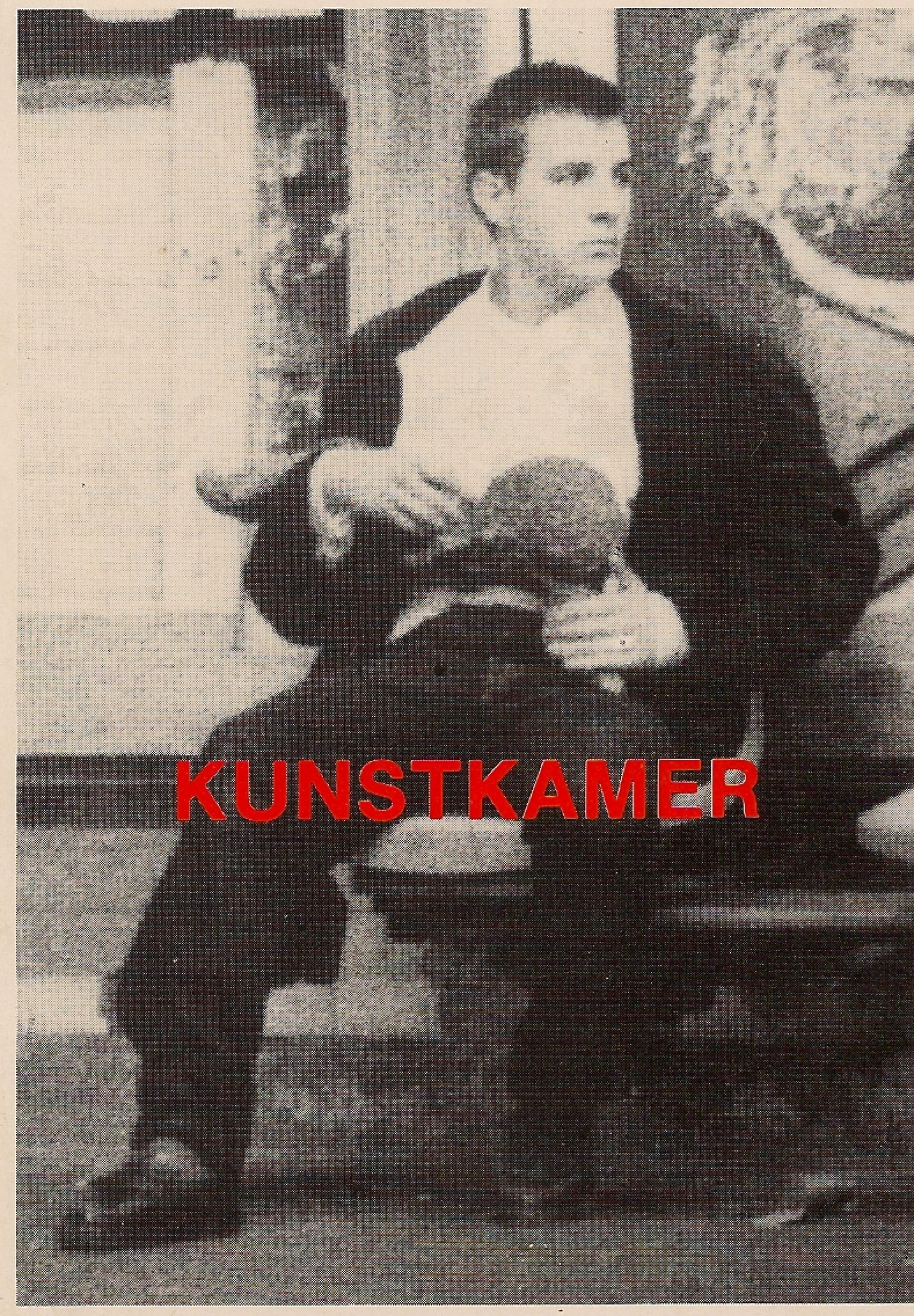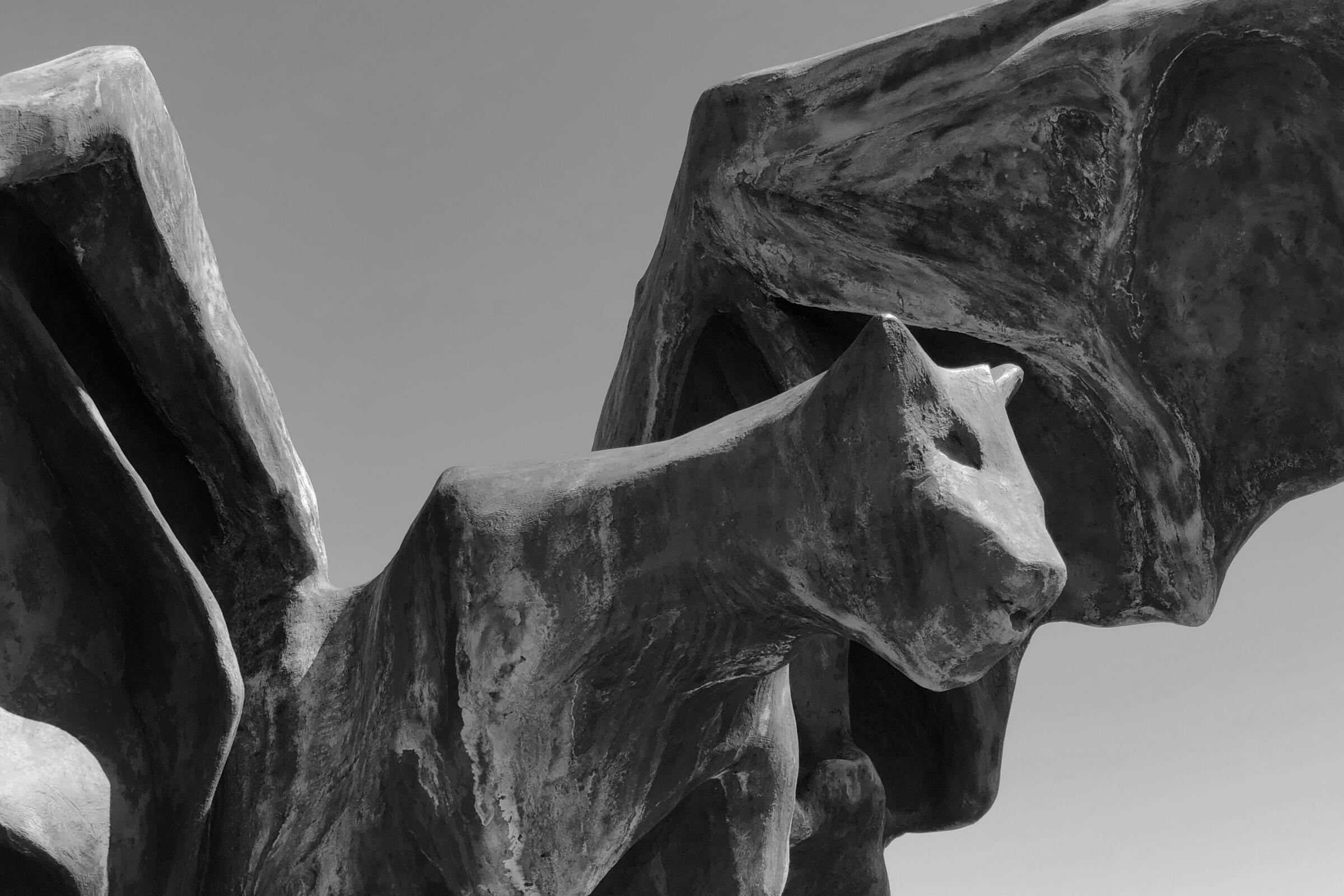
“La Langue”, 1986-2008
“Johan Creten considers “La Langue” (The Tongue) to be a veritable key work in his career as an artist: what we grasp obscurely in this sculpture, what gives it its force of conviction and its great emotional quality, is the mysterious and original moment when something manages to say itself, to express itself in the form of a work of art, it is the advent of an expression of its own, it is the epiphany of the artist's Tongue.”
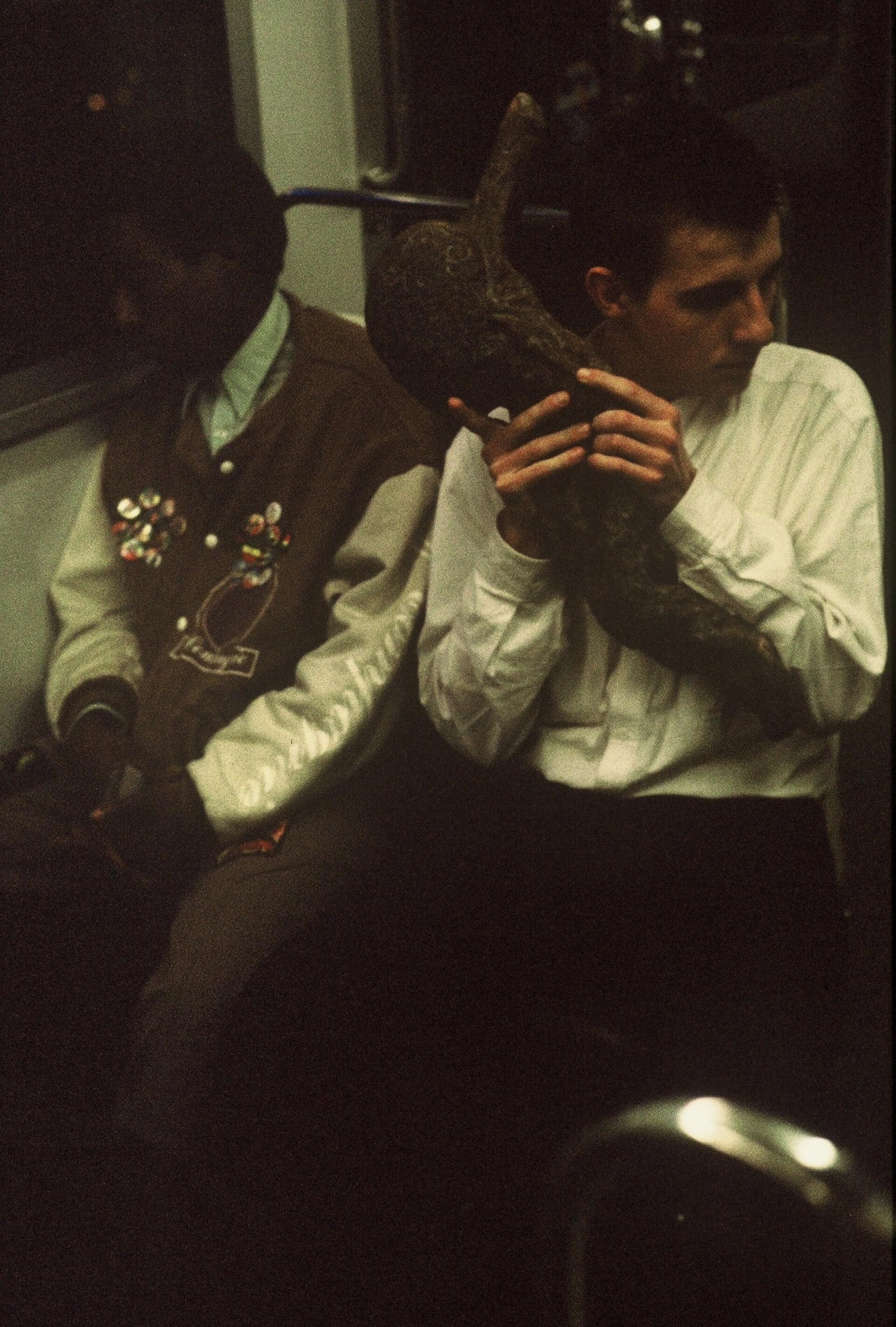
“Indeed, the work subtly unites a multitude of intimate contrasts: the visual and the conceptual, form and content, artistic creation and handcrafting, attraction and repulsion, Eros and Thanatos turn out here to be no more than apparent opposites, which “La Langue” overcomes or dissolves.”
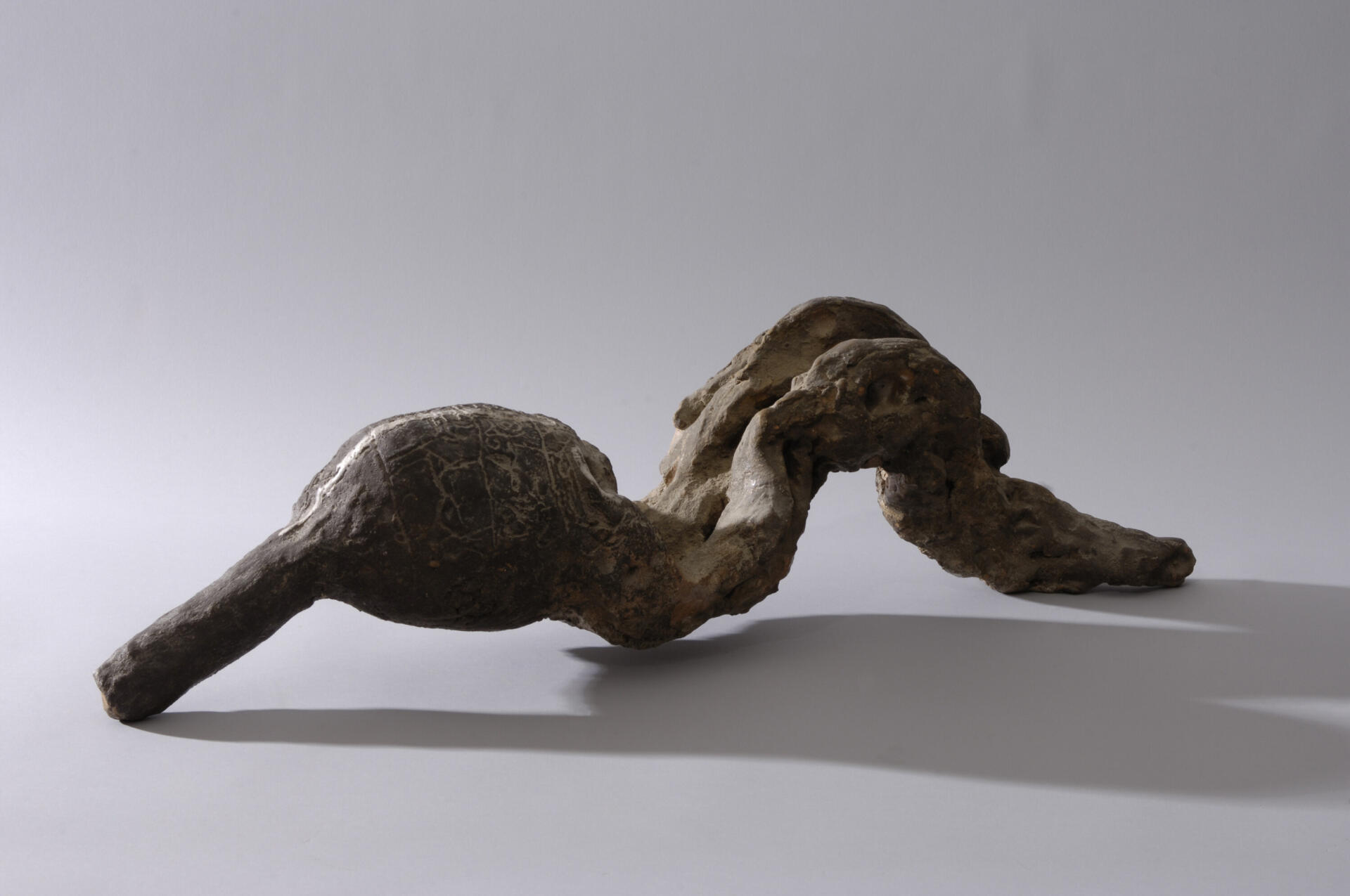
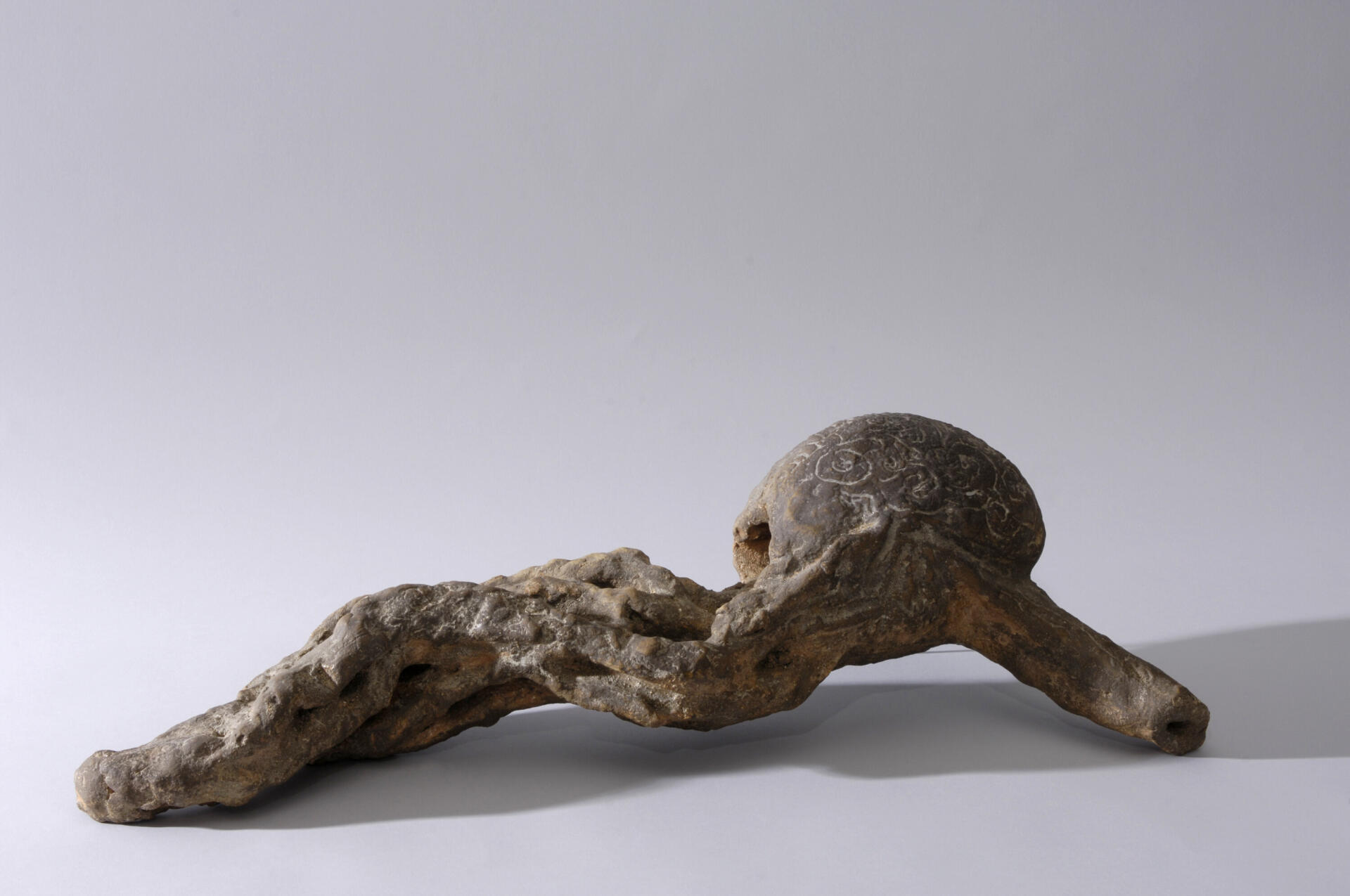
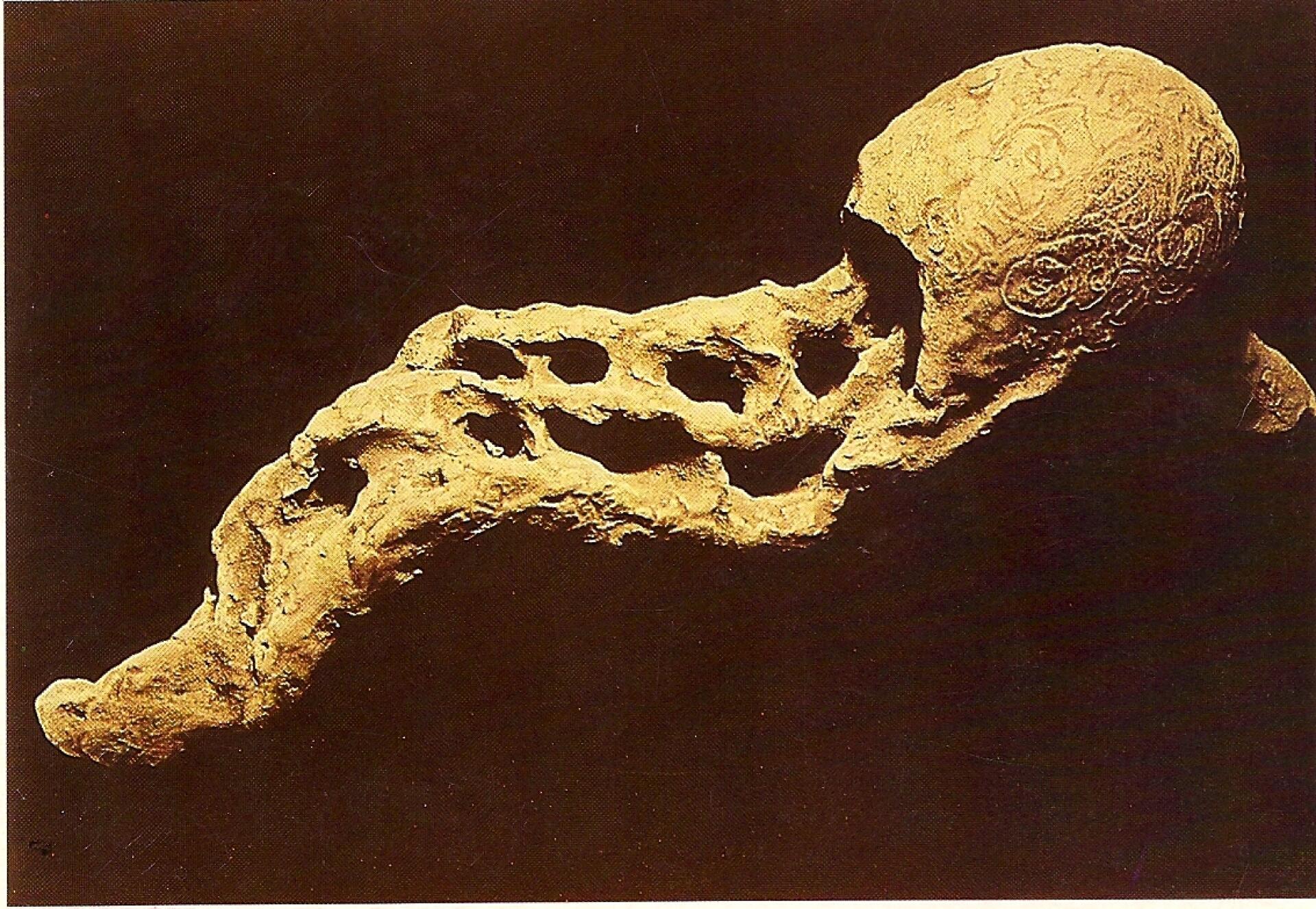
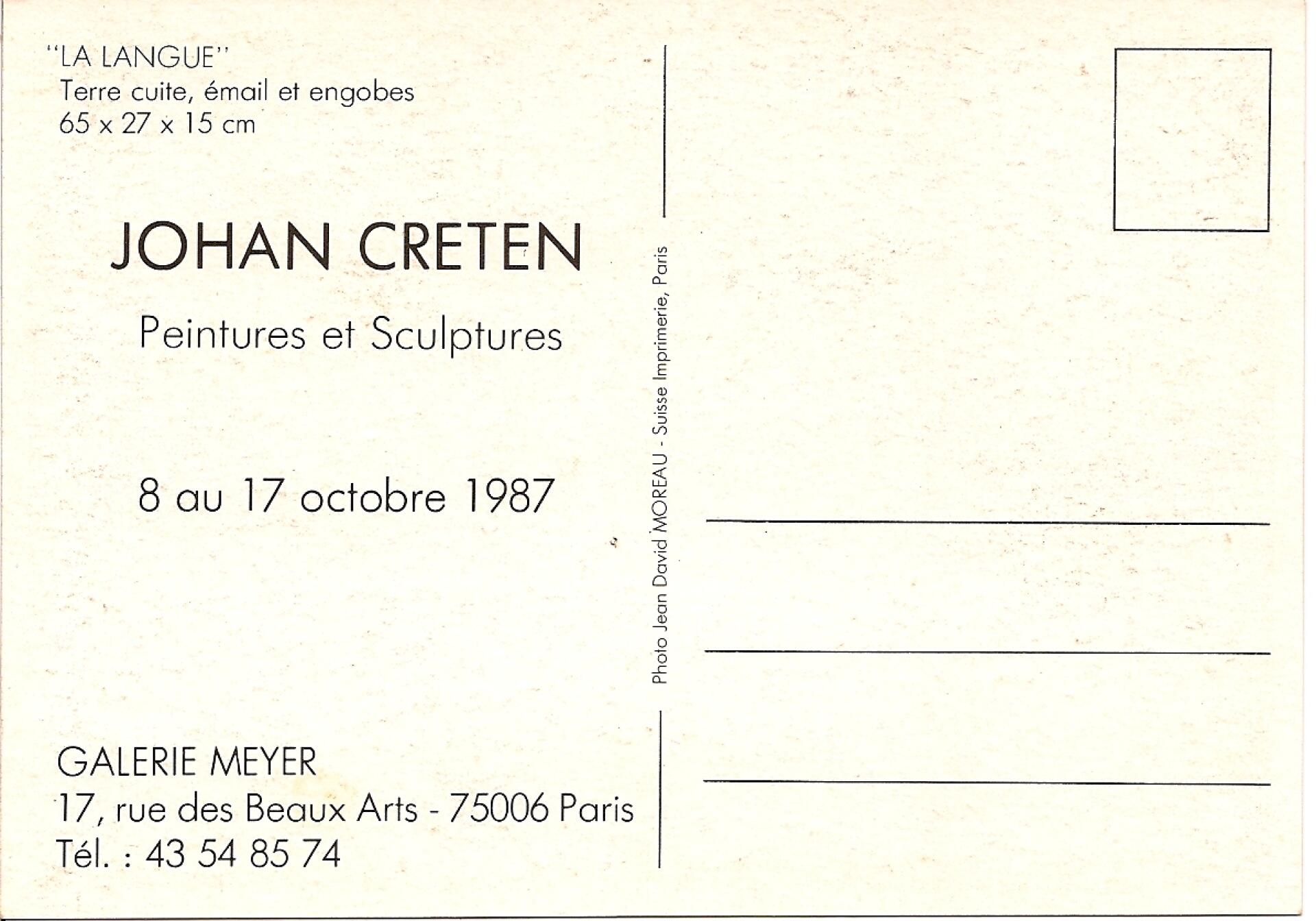
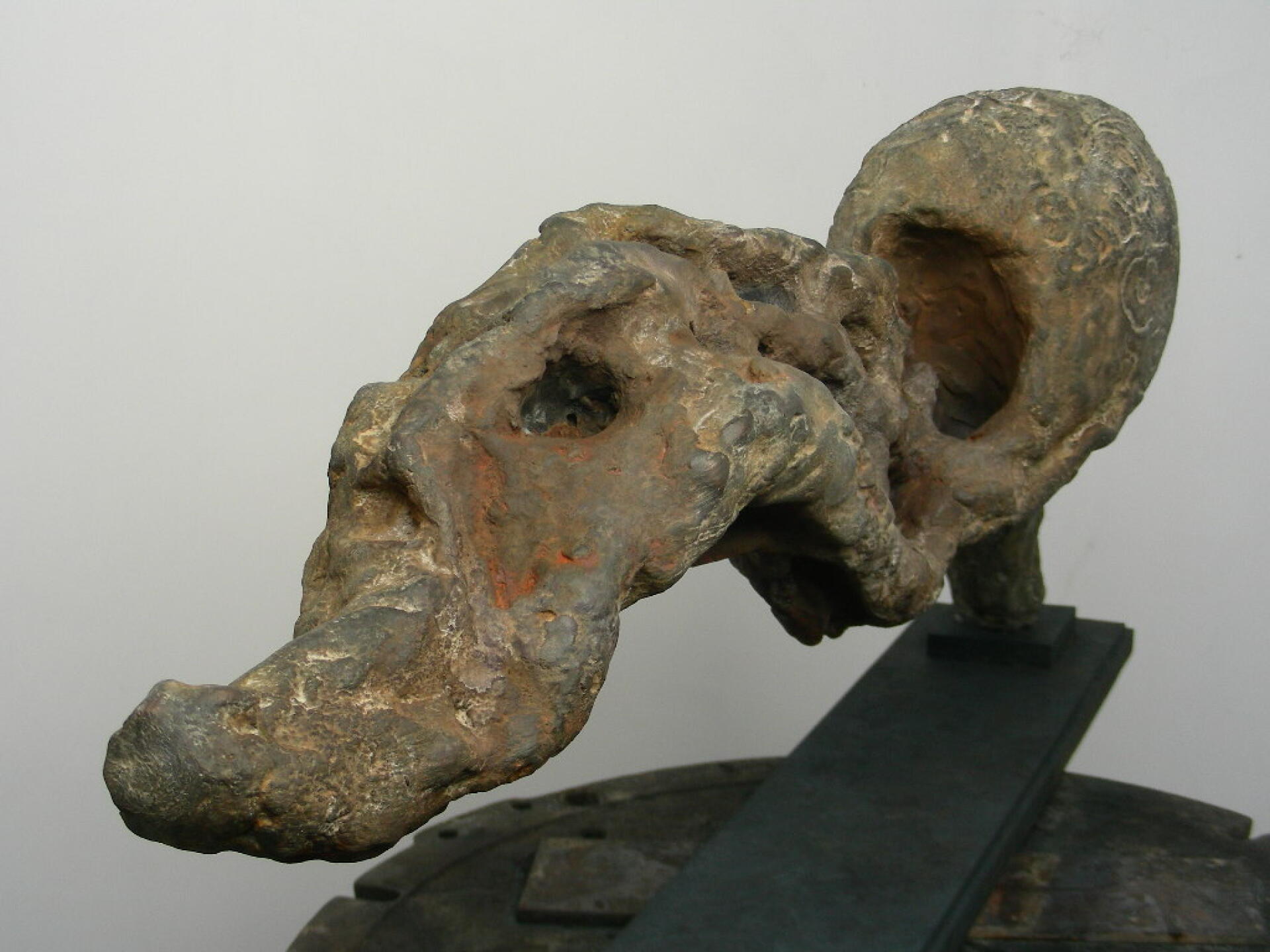
“Creten alludes to the ephemeral and fragile nature of our human condition: a creature among other earthly creatures, man is mortal; made of the clay of the ground, according to the Book of Genesis, he will return to dust. Doesn't “La Langue” bear a strange resemblance to a rhizome or a stump, metaphorizing our rootedness in the here and now, reminding us of the need to stay in touch with what has given birth and nourished us? It's no coincidence, then, that "La Langue" was originally modeled in clay, the true material of origins, the "raw" material that Creten cherishes above all others. So what are we to make of the artist's decision to cast this work in bronze? Doesn't bronze risk betraying the essence of the work, doesn't it correspond to the proud challenge of immortalizing the mortal? If Creten took the risk, it's perhaps because the hardness and heaviness of bronze assert, differently and perhaps even more intensely than terracotta, the implacable and radical nature of our anchorage in matter: incapable forever of evaporating, of falling back to dust, bronze sculpture is doomed for eternity to remind us of the hard, heavy matter to which we belong.”
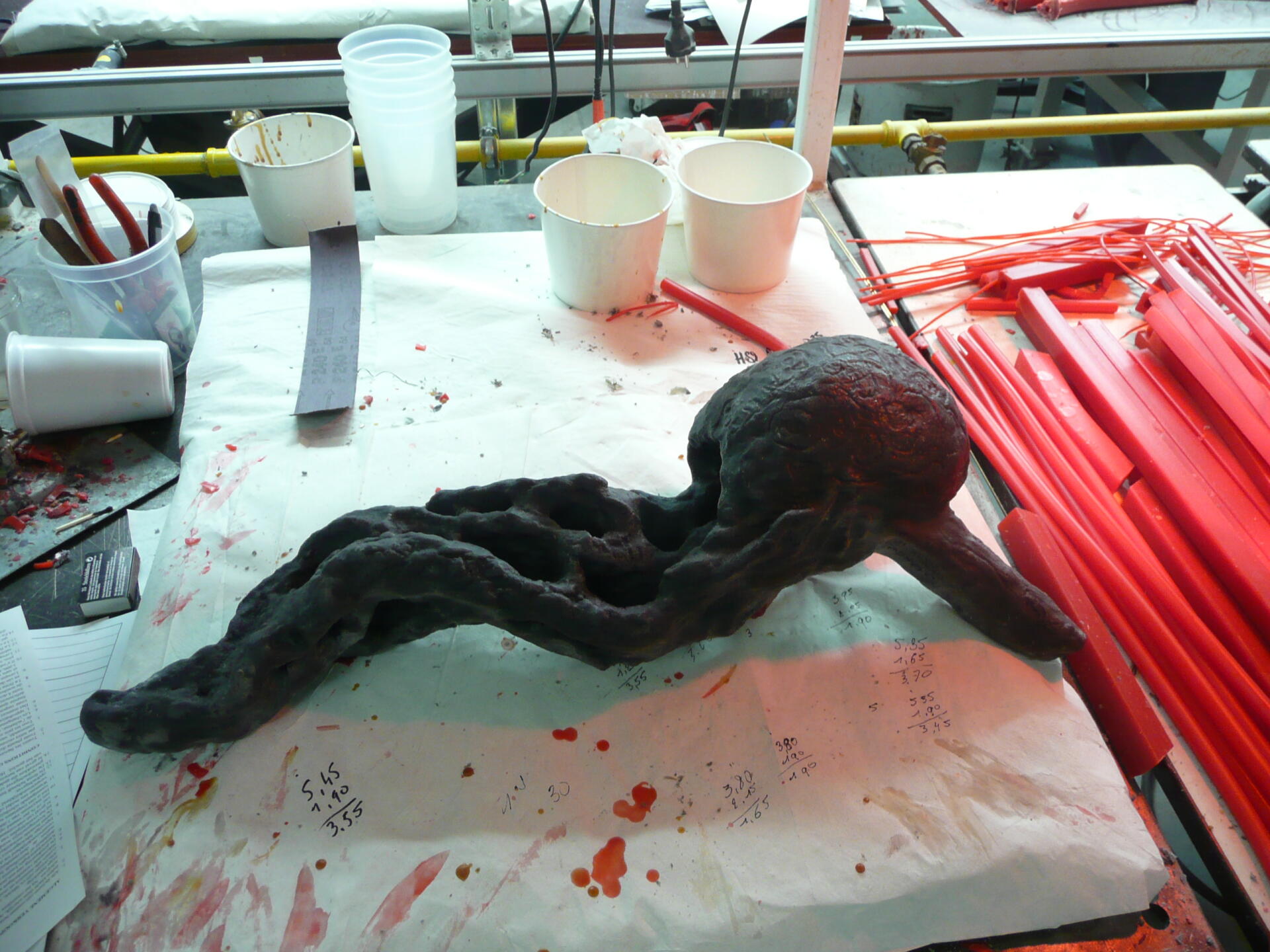
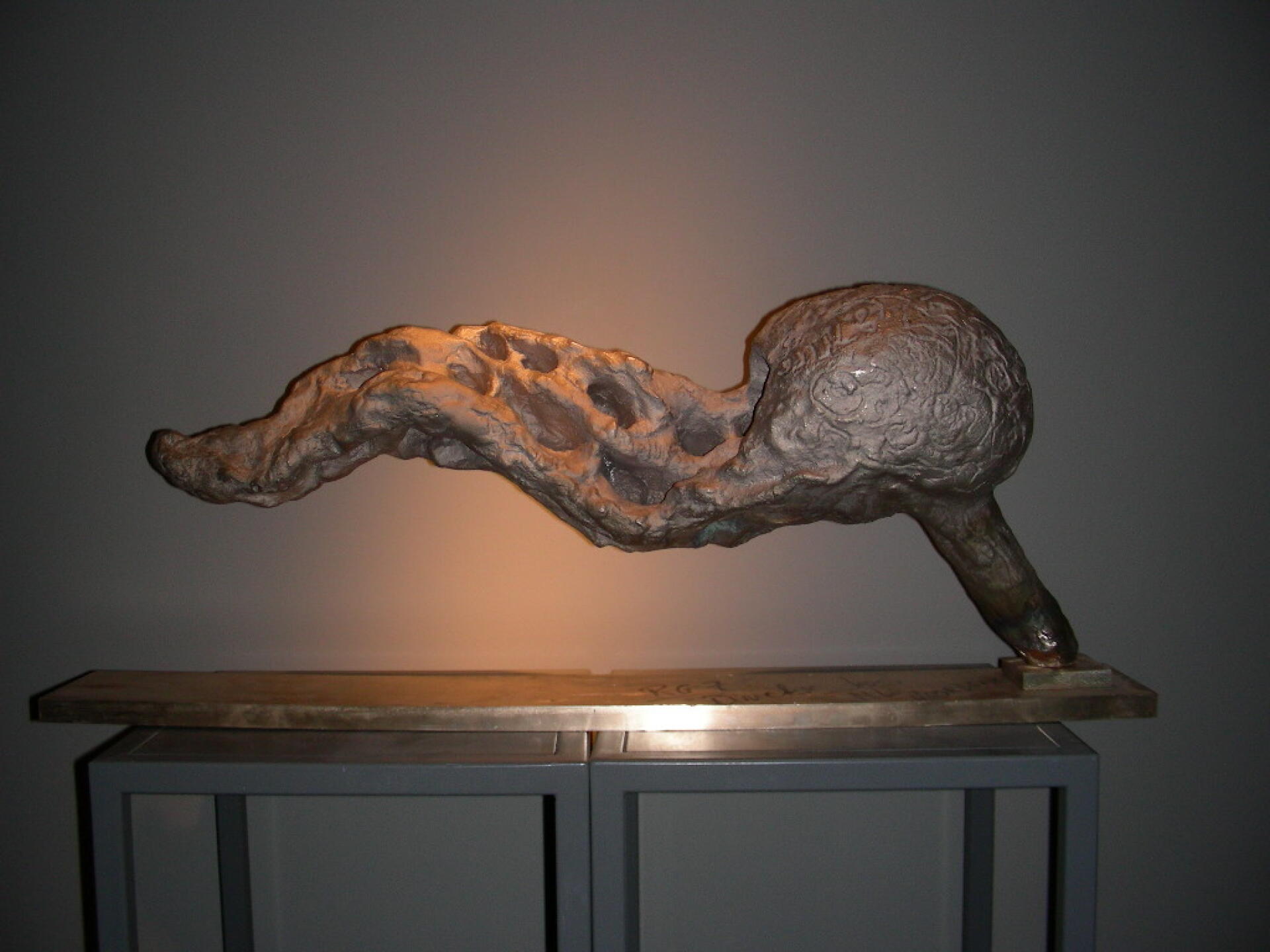
“According to the artist, the nodulatory movement of the tongue "symbolizes the whims of life, its unexpected turns"; but he hastens to add that this tongue “is also an erotic metaphor”. Looking at a work of art - embracing it with the eyes, caressing it with the eyes - is in itself already an erotic act. But the tongue as a whole is of course an erotic organ: the instrument of the kiss and of the loving word whispered in the ear, it also symbolizes the sexual organ, the penis: lever, club, crank, handle. In "La Langue", death (suggested by the skull) is thus in direct relation to sexual desire; Eros and Thanatos come together here in a fragile, poignant movement.”

"With “La Langue”, Creten in turn explores the limits of sculptural art, opening up a perspective on art history and sociology. During his exhibition “Chambre d'art” at Galerie Meyer in Paris, the artist temporarily removes the sculpture from the familiar, clean space in which it is exhibited, and walks it around the Paris metro overnight. The different ways in which the work is then carried are in line with the multiple interpretations we've seen it lend itself to. So, for example, the sexual baton can be held like the handle of a weapon - and here “La Langue” takes the form of a machine gun, transforming itself into an aggressive object that threatens its surroundings while defending its wearer. The defensive aspect becomes protective when the sculpture is worn like a child : from protector of its wearer, here it becomes his protegee, his most cherished phallic object."
